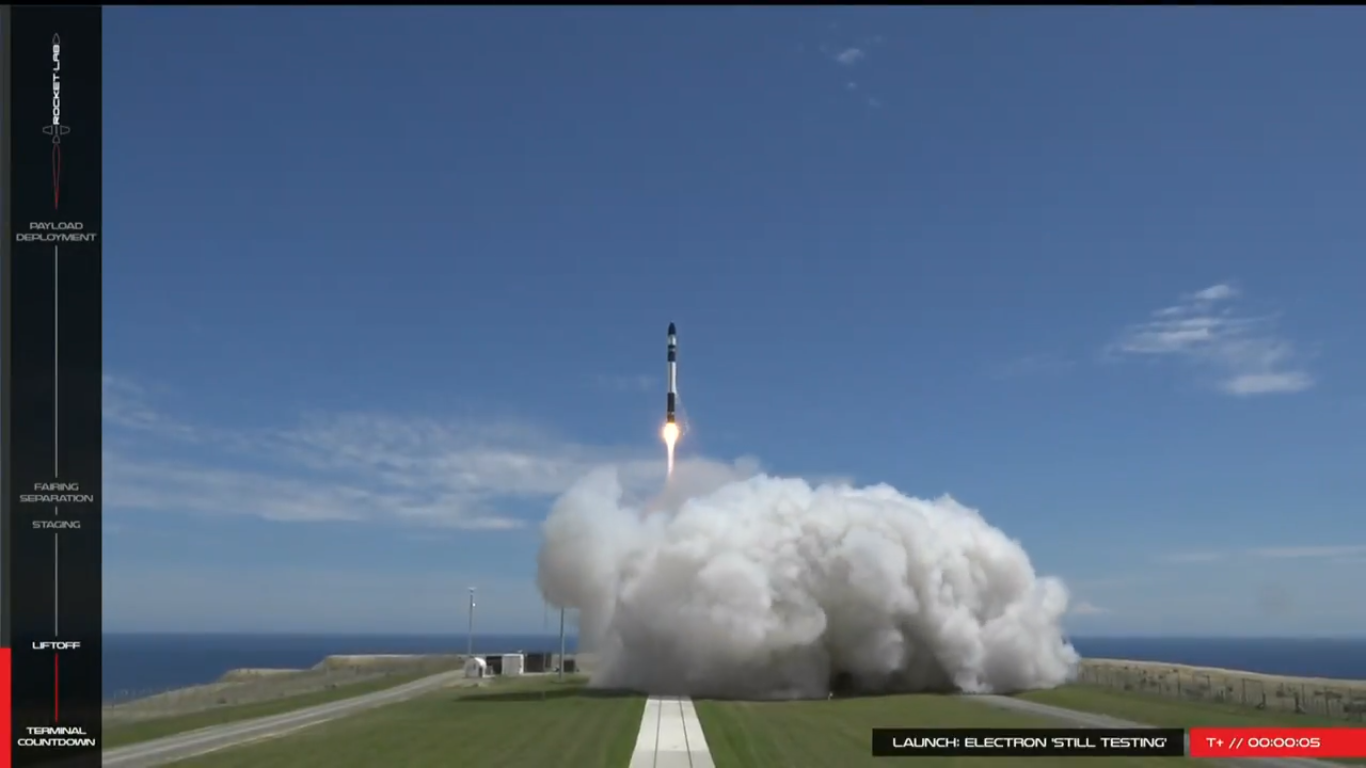First successful launch of the Electron rocket
On January 21st, at 01:43 UTC, Rocket Lab USA successfully launched the Electron rocket from the LC-1 launch pad on the Mahia Peninsula in New Zealand. During the Still Testing mission three satellites were launched into orbit: one Planet Labs' Flock-2 and two Spire Global's Lemur-2. It was the second mission of this rocket and the first successful.
The Electron rocket is a 17-meter tall, 1.2-meter diameter, two-stage construction. The first stage uses nine Rutherford engines and the second uses one vacuum-optimised engine. What distinguishes it from other rockets is the use of electric pumps pumping fuel into the combustion chamber. Many parts of the engines are 3D printed.
Electron is to be used for lifting small (<225 kg) satellites into space. Manufacturers of CubeSats will therefore have much greater possibilities when it comes to choosing the launch date or target orbit. Until now, they had to send their satellites on large rockets as an additional cargo.
For the first time the rocket was launched in May 2017, but then, after separation of the first and second stages, it was necessary to destroy the rocket. The problem proved to be a system transmitting telemetric data, provided by an external company.
This time, during the Still Testing mission, everything went according to plan. The rocket launched at 01:43 UTC from the Launch Complex 1 on the Mahia Peninsula in New Zealand. After just over three minutes, the first and second stage were separated. About half a minute later, payload fairing was jettisoned. It protected the satellites during flight in the earth atmosphere. Less than 7 minutes into the flight, some of the batteries that had already been discharged were discarded, which made it possible to slightly reduce the rocket weight. Around two minutes later, the Rutherford engine in the second stage was shut down, which meant that the cargo made it to orbit. Eventually, a moment later, satellites were released and the mission was successfully completed.
Initially, the launch was to take place in December, but it was postponed several times. During one attempt the engines in the first stage were inginted, but the on-board computer detected that the temperature of liquid oxygen was too high, resulting in lower-than-anticipated thrust. The engines were switched off and the launch aborted. Another time, the weather was a problem, namely strong upper level winds. Then technical problems with the batteries were also detected, which resulted in postponing the launch to January.
On 20 January, the first attempt to launch the Electron rocket in 2018 was made. This time the attempt was interrupted due to boats in the exclusion zone. The launch was finally postponed by 24 hours and this time it was fully successful.
Success of the mission was confirmed by both customers – Planet Labs and Spire Global.
You can watch the launch below.


Nice Information to be shared on this platform..
thankyou for sharing @technocracy
The rocket did too many direction adjustments. Also the lift off was a little bit slow, compared to the currently available Ariane 6 rocket.
But thank you for the video. Every rocket launch is always exciting. And the Mission Control room at the final of the stream was gorgeous.
are the discarded components being collected & re-used?
No, currently the company do not reuse components of it's rockets. Peter Beck (Rocket Lab's CEO) said few years ago that they aren't going to reuse their rockets. Maybe they will change their mind in the future or maybe they will develop another rocket, designed to reuse from the beginning.